Laying plywood
Sheets of plywood can be used to create a solid, smooth subfloor before laying your finished floor covering. Thin plywood (6mm) is used as an option to hardboard, providing a subfloor for coverings such as vinyl, carpet and soft tiles. Thicker plywood (12-18mm) is used to provide a rigid subfloor for hard tiles. You may choose to use large sheets (2.4m x 1.2m), which will cover a floor area more quickly with fewer joints, although they are harder to handle and transport. Smaller sheets (normally 1.2m x 60cm) are easier to use and provide the best option in smaller rooms. It is essential to find safe fixing points when laying a floor – a cable, pipe and stud detector will help – also fixing length is essential so that nails or screws only go through the ply and into, but not below, the floorboards.
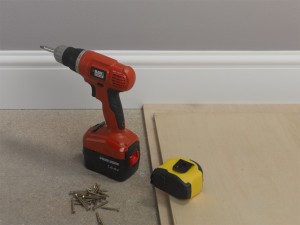 |
1. When laying the plywood, first make sure that the no floorboards are loose, as a subfloor must be laid on a surface that is as rigid as possible. |
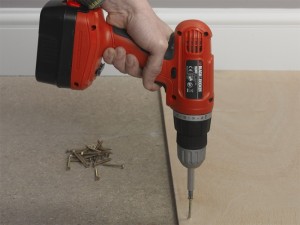 |
2. Start laying the plywood from a square corner, securing in place with ring shank nails or screws (as shown here) every 15cm along the edge. |
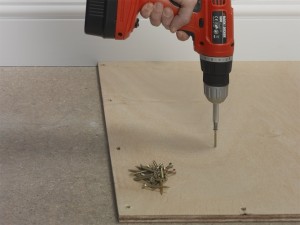 |
3. Continue with fixings at 15cm centres, in other words at 15cm intervals around the edge and in lines across the centre of the sheet as well. |
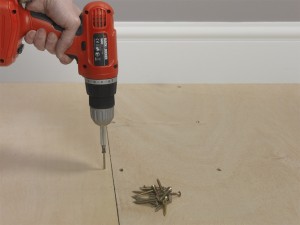 |
4. Screws should go into the floorboards but not through them. Butt join the sheets tightly and continue laying them across the floor. |
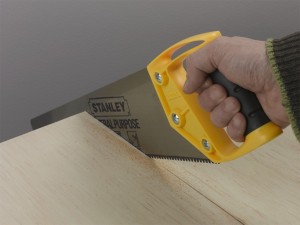 |
5. If sheets of ply need to be cut to fit, use a panel saw for straight cuts and a profile gauge and jigsaw to make cuts around architraves or pipes. |
Laying ply tips
- Laying a ply subfloor will alter the floor height in a room significantly – also remember the further addition of the finished floor covering. Doors will often require trimming.
- If you are laying ply as a subfloor for vinyl or cork, fixing heads must be completely flush with the ply surface or they will show through in the final floor finish.
- If you’re laying ply over floorboards, for a hard tile floor, you should really screw it down. In this situation, I also like to secure through the floorboards and into the joists below, although you need to be extra careful about ensuring you don’t hit any pipes or cables. For hard tiles you also need to ensure that the ply is exterior grade or WBP. Don’t use standard interior ply as a sub-floor for hard tiles. And finally don’t use ply as a sub-floor for hard tiles if you’re creating a wet room.
